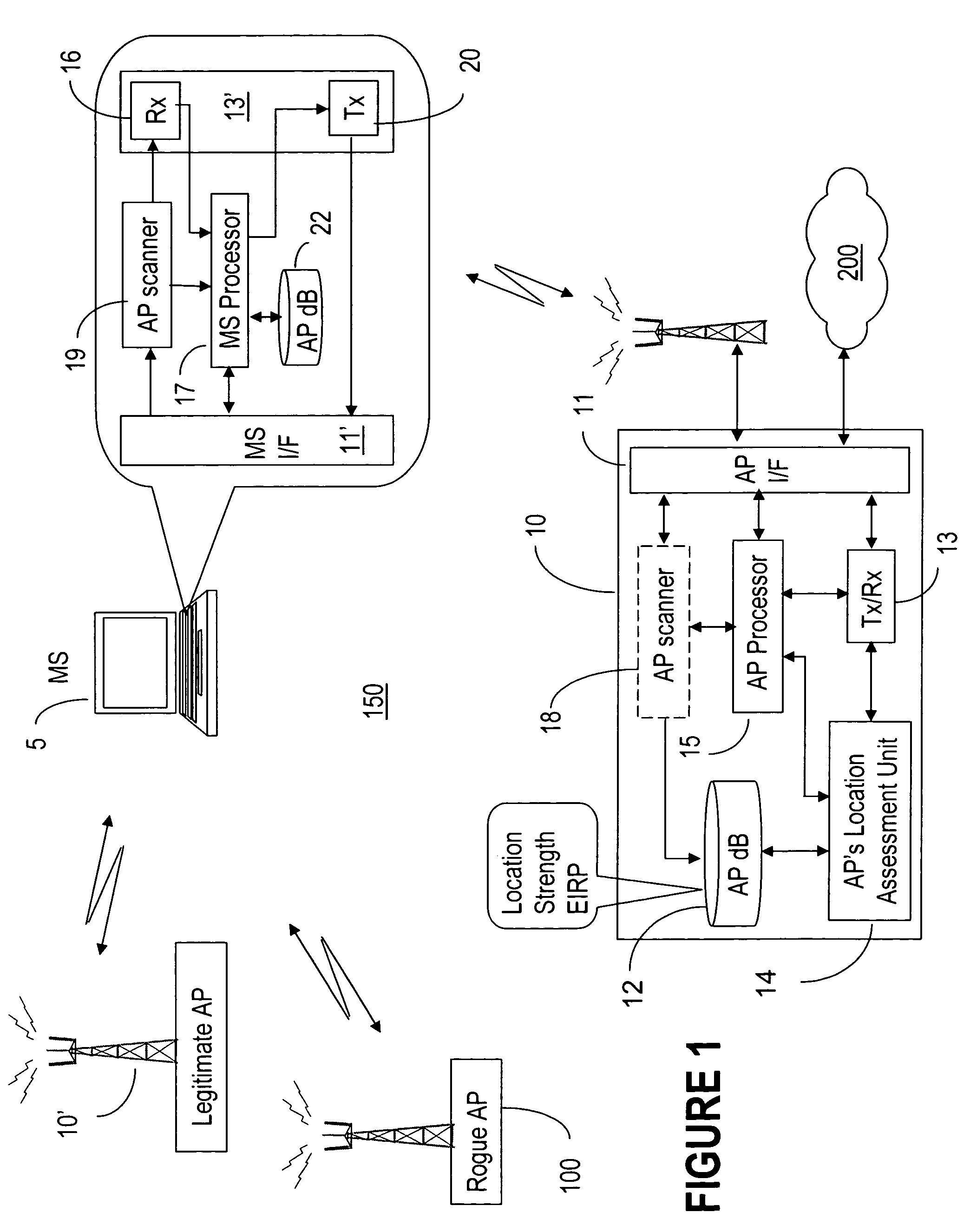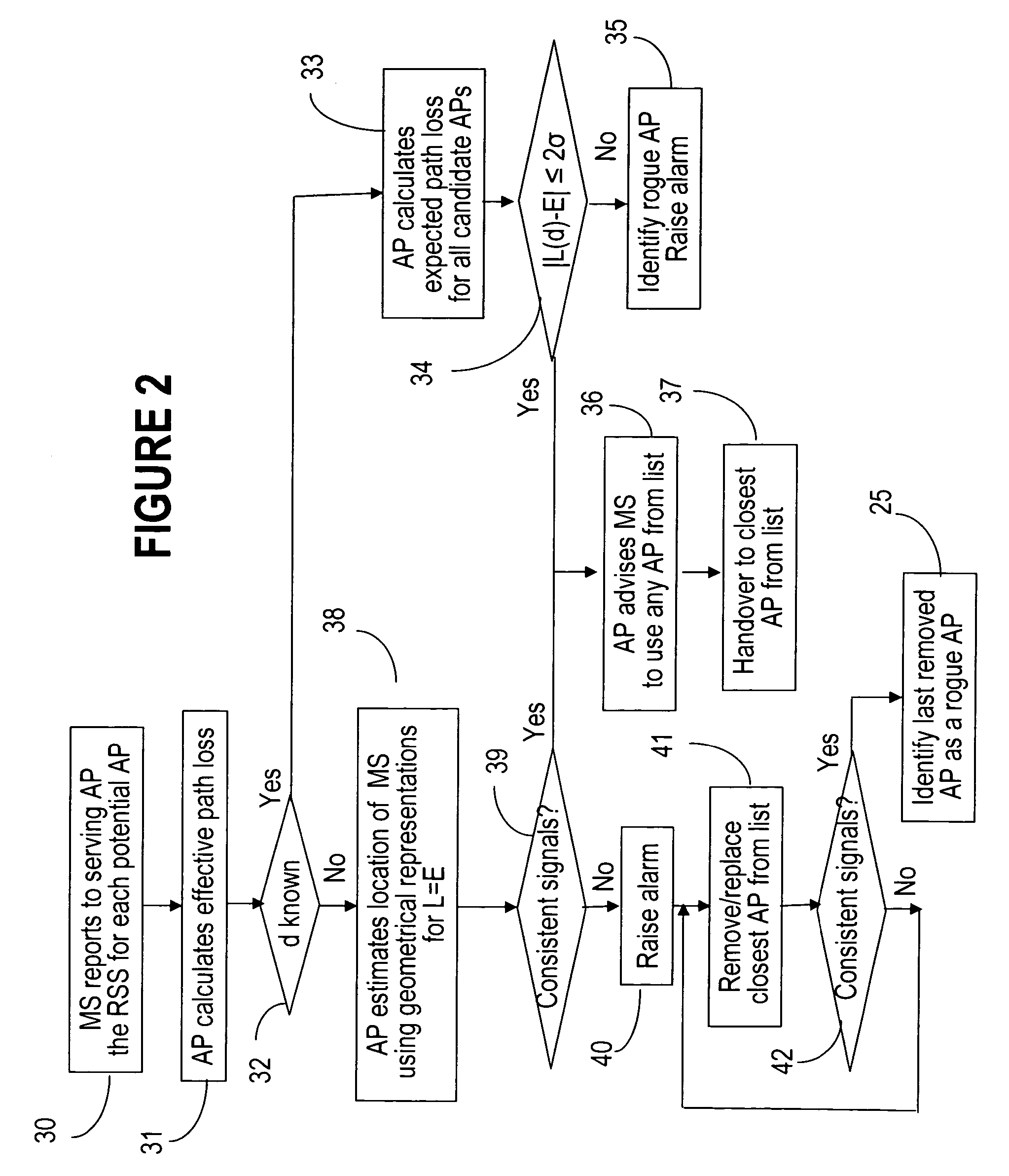Rogue access point detection in wireless networks
a wireless network and access point technology, applied in the field of communication networks, can solve the problems of unauthorized mobile station access to a network to steal services, significant monetary losses for the respective network and service provider, and complex and sophisticated task of ms authentication
- Summary
- Abstract
- Description
- Claims
- Application Information
AI Technical Summary
Benefits of technology
Problems solved by technology
Method used
Image
Examples
Embodiment Construction
[0028]This invention is directed to determining the legitimacy of an access point (AP) to a wireless network based on the consistencies in the received signal strength (RSS) reports from a mobile station (MS). In particular, it enables a MS with the help of a legitimate AP to recognize a rogue AP during the hand-over phase and / or whilst the communication is active. The invention is also concerned with using the MS as a mobile sensor, once the MS is in communication with a legitimate AP.
[0029]The term “hand-over” designates here the widely recognized operation of switching a call in progress from one AP to another, without disrupting the communication. This procedure is used to provide seamless service to a MS when the subscriber is moving to / from the respective area of coverage. During the hand-over, a rogue AP may masquerade a legitimate AP, so that the mobile user will lose the connection with the access network. The term “communication” here is used to designate the exchange of i...
PUM
 Login to View More
Login to View More Abstract
Description
Claims
Application Information
 Login to View More
Login to View More - R&D
- Intellectual Property
- Life Sciences
- Materials
- Tech Scout
- Unparalleled Data Quality
- Higher Quality Content
- 60% Fewer Hallucinations
Browse by: Latest US Patents, China's latest patents, Technical Efficacy Thesaurus, Application Domain, Technology Topic, Popular Technical Reports.
© 2025 PatSnap. All rights reserved.Legal|Privacy policy|Modern Slavery Act Transparency Statement|Sitemap|About US| Contact US: help@patsnap.com



